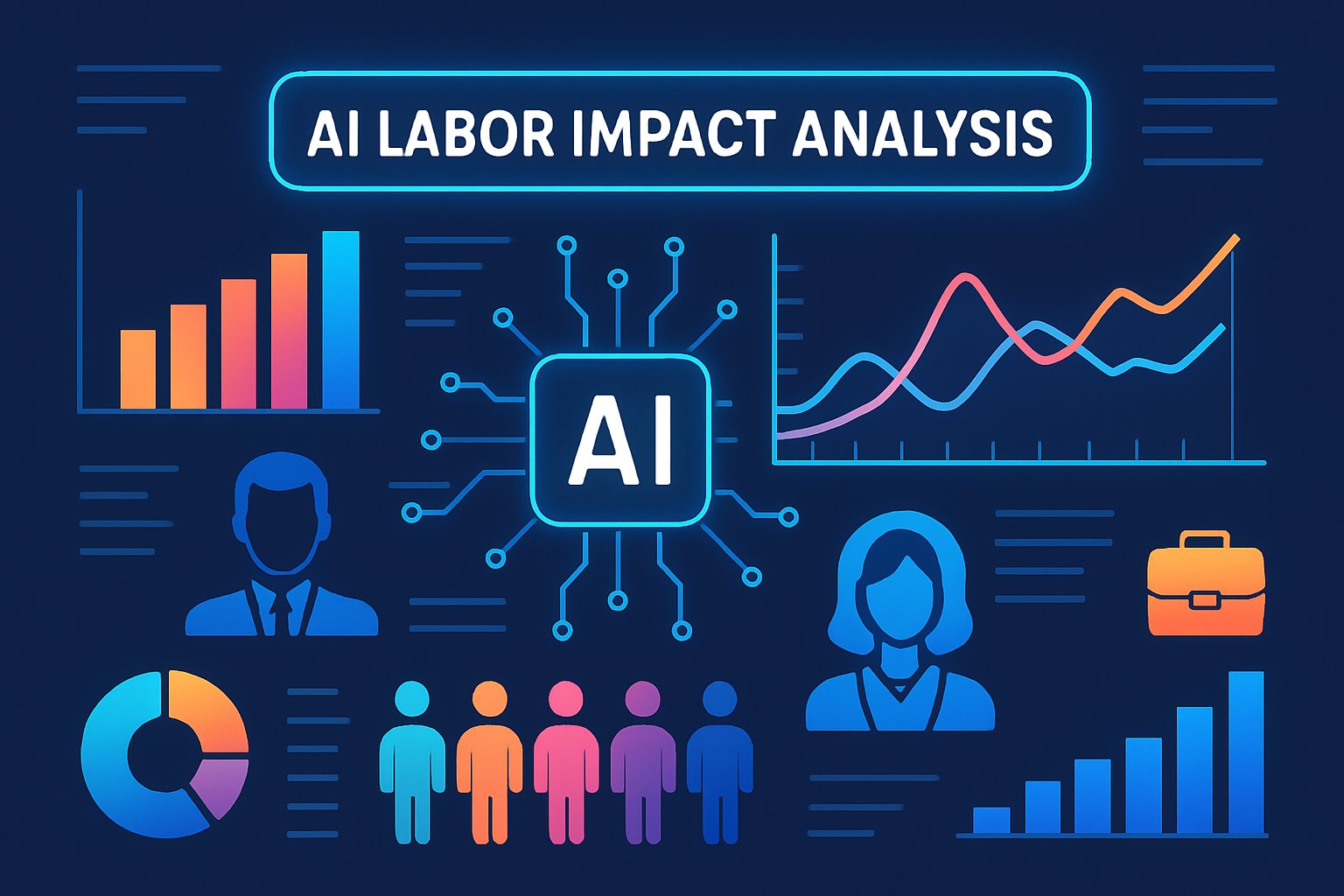
AI CERTS
18 hours ago
New Data Driven AI Labor Impact Analysis Shows Limited Job Harm
Meanwhile, we confront persistent job automation myths clouding boardroom decisions. Understanding genuine workforce evolution signals has never been more urgent. Therefore, this exploration balances optimism and caution using peer-reviewed data. In contrast, sensational headlines rarely cite longitudinal payroll records. You will leave with actionable insights for strategic talent planning. Additionally, we highlight monitoring frameworks that executives can implement today. Such frameworks support agile responses as AI capabilities accelerate.
Evidence Remains Surprisingly Stable
Brookings and Yale budget researchers examined occupational data through October 2025. They found that employment shares across high, medium, and low AI exposure categories remained stable. Moreover, wage growth followed pre-existing trends instead of collapsing. The OECD reached similar conclusions in its 2023 Employment Outlook chapter. In contrast, media narratives still warn of mass layoffs fueled by algorithms. This mismatch underscores why rigorous AI Labor Impact Analysis matters for decision makers. Furthermore, OpenAI exposure mappings show potential, not realized, automation. Therefore, exposure metrics should not be confused with job losses. Nevertheless, aggregate calm can mask local turbulence requiring closer scrutiny.

So far, aggregate series signal continuity. However, micro studies reveal early cracks, leading to our next section.
Targeted Disruptions Emerging Fast
Stanford Digital Economy Lab tracked payroll records for workers aged 22-25. They recorded a 13% relative employment decline in highly exposed occupations since late 2022. Consequently, reduced hiring, not wage cuts, drove the fall. Acemoglu and colleagues observed similar vacancy shifts within AI exposed firms. Furthermore, these firms trimmed non-AI job postings while expanding technical roles. Meanwhile, Penn Wharton predicted roughly 40% of current jobs hold high exposure potential. Yet adoption rates near 26% indicate unrealized capacity remains. Such concentrated effects complicate simple job automation myths repeated online. Therefore, leaders must examine cohort, task, and sector data simultaneously. The targeted evidence suggests urgency without panic. Nevertheless, many myths still dominate headlines, which our next section debunks.
- Brookings: No economy-wide AI job collapse.
- Stanford: 13% early-career decline.
- Penn Wharton: 40% tasks high exposure.
- NBER surveys: 26-39% workplace adoption.
Debunking Job Automation Myths
Sensational claims often ignore economic substitution, productivity, and reinstatement dynamics. Moreover, displacement effects can be offset by new task creation. Brookings researcher Molly Kinder stated the labour market tells a continuity story. Consequently, policy analysts view employer power as a larger wage determinant. In contrast, AI Labor Impact Analysis shows minimal aggregate wage damage. Additionally, job automation myths overlook the time lag between exposure and adoption. OECD authors warn that measurement windows remain short. Therefore, concluding an inevitable jobs apocalypse is premature. Nevertheless, ignoring early signals could prove costly later.
Myth-busting restores evidence-based strategy. Next, we explore how workforce evolution indicators sharpen talent planning.
Monitoring Workforce Evolution Trends
High-frequency data sets enable quicker detection of hiring shifts. For example, ADP payroll feeds now inform monthly dashboards. Moreover, vacancy analytics highlight falling demand for routine office support roles. Meanwhile, postings requesting prompt engineering skills are rising. These signals illustrate live workforce evolution, not distant speculation. Consequently, executives should build granular metrics by age, task, and geography. Such dashboards support ongoing AI Labor Impact Analysis for strategic reviews. In contrast, annual reports often arrive too late for intervention. Therefore, boards must demand real-time talent intelligence.
Live metrics expose subtle disruptions early. Subsequently, policy discussions can shift from reactive to proactive.
Policy Actions Under Discussion
Governments study training subsidies, portability of benefits, and wage insurance. Furthermore, Brookings researchers call for anonymized vendor usage data. Such transparency would improve causal attribution in future studies. OECD analyses suggest stronger collective bargaining can share productivity gains. Meanwhile, some advocates focus on antitrust measures to curb employer power. Effective frameworks must integrate ongoing AI Labor Impact Analysis findings. Additionally, programs should target cohorts already feeling strain, notably early-career workers. Consequently, political momentum is building for lifelong learning credits. In contrast, blanket automation taxes draw limited support among economists.
Sound policy balances innovation with inclusion. Next, we detail certifications that future-proof individual careers.
Certification Pathways For Professionals
Skills investments complement institutional reforms. Professionals can enhance expertise with the AI + Foundation Certification. Moreover, employers increasingly reward verifiable AI fluency. Such credentials signal adaptability during workforce evolution. Consequently, HR leaders integrate certification pathways into upskilling budgets. Comprehensive AI Labor Impact Analysis often recommends parallel initiatives. Therefore, earning credentials today positions talent ahead of automation curves.
- Demonstrates applied prompt-engineering skills.
- Shows commitment to responsible AI ethics.
- Aligns learning with emerging regulatory demands.
Certifications bolster individual resilience. Finally, we survey critical forward indicators.
Outlook And Key Signals
Labour data show stability, yet early disruptions merit vigilance. Subsequently, researchers will monitor entry-level cohorts each month. Moreover, vendor usage transparency could transform empirical clarity. Boards should schedule quarterly AI Labor Impact Analysis updates. Meanwhile, analysts will scrutinize wage dispersion within AI-exposed firms. In contrast, aggregate unemployment is unlikely to spike suddenly. Therefore, strategic agility remains the best hedge. Continual learning, policy agility, and transparent data form the resilience triad.
Key signals are visible and measurable. Consequently, informed leaders can act before shocks magnify.
The data speak louder than fears. Overall employment and wages remain steady despite surging AI adoption. Nevertheless, early-career workers in exposed roles confront real turbulence. Consequently, rigorous AI Labor Impact Analysis should anchor every strategic plan. Moreover, dispelling job automation myths helps leaders allocate resources wisely. In contrast, ignoring workforce evolution metrics risks talent shortages tomorrow. Boards must demand quarterly AI Labor Impact Analysis updates backed by transparent vendor data. Additionally, professionals should pursue the linked certification to remain competitive. Therefore, act now: review dashboards, refine policies, and register for advanced credentials today. Timely moves secure resilience as technology accelerates. Sustained AI Labor Impact Analysis will keep organisations ahead of unpredictable shifts.



